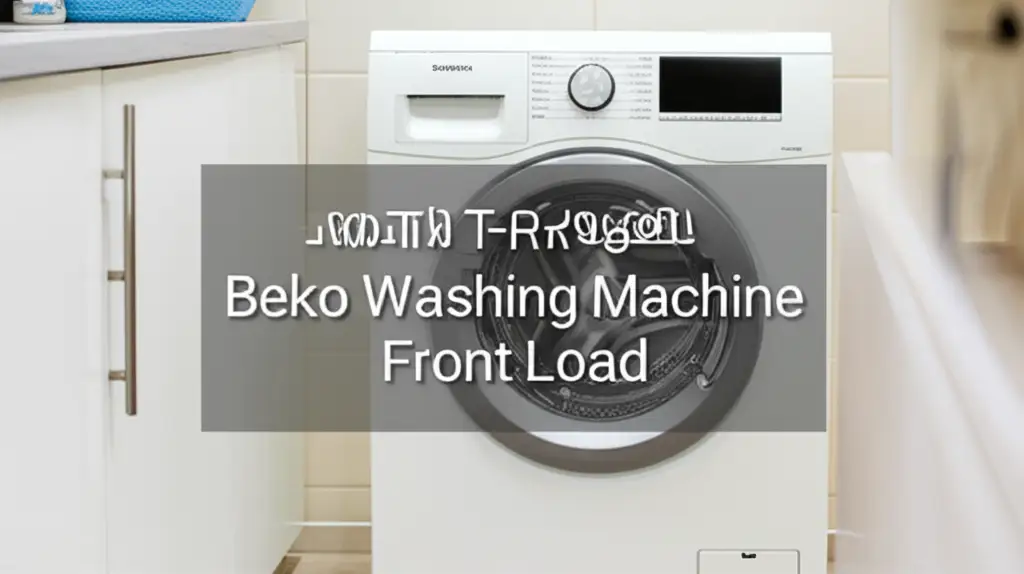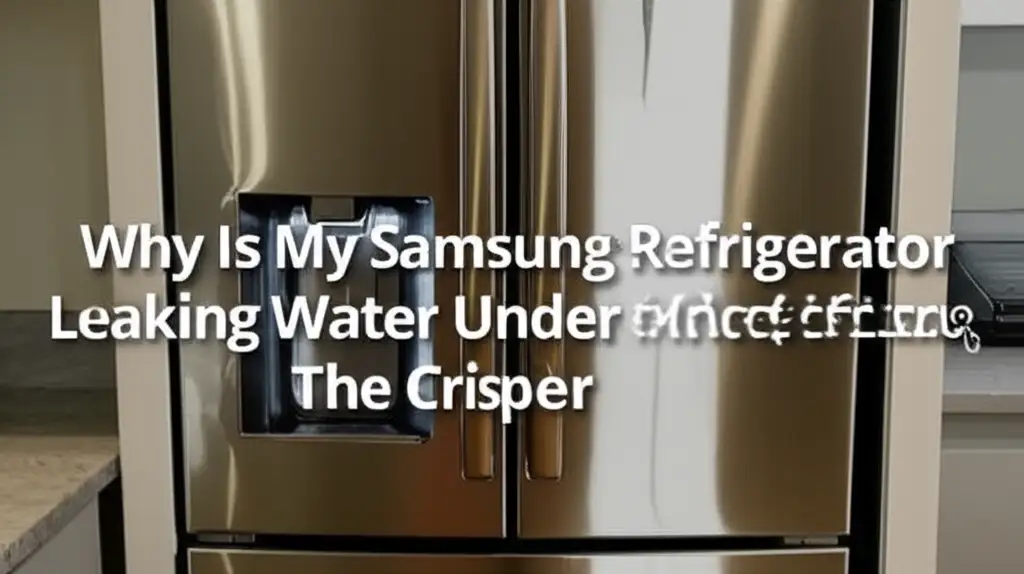· Todd Martin · Home Appliances · 13 min read
How To Start Maytag Washing Machine Top Loader

How To Start Your Maytag Top Loader Washing Machine
Starting your Maytag top loader washing machine ensures clean clothes. I understand you want a straightforward process for laundry day. This guide shows you exactly how to begin a wash cycle. We will cover everything from loading clothes to selecting the right settings. You will learn the simple steps to get your Maytag washer working for you.
Takeaway
- Load Clothes Correctly: Do not overload the tub. Distribute items evenly.
- Add Detergent: Use the right amount in the dispenser or directly in the tub.
- Choose Cycle: Select the appropriate wash cycle for your fabrics.
- Set Options: Adjust water temperature, soil level, and spin speed.
- Close Lid: Ensure the lid is fully closed for the machine to start.
- Press Start: Activate the wash cycle by pressing the “Start” or “Start/Pause” button.
To start a Maytag top loader washing machine, first load your clothes, then add detergent and any laundry additives. Next, select your desired wash cycle and adjust any options like water temperature or soil level. Finally, close the lid securely and press the Start button.
Understanding Your Maytag Top Loader Controls
Every Maytag top loader washing machine has specific controls. Knowing these controls makes starting a wash simple. You will find a main dial or touch panel for cycle selection. Other buttons adjust settings like water temperature or soil level. I find it helpful to look at the control panel first.
The primary control on your Maytag top loader washing machine is the cycle selector. This dial or button allows you to choose the type of wash you need. Options usually include Normal, Delicates, Heavy Duty, and Bulky Items. Some models have specialized cycles like Deep Water Wash or Sanitize. Picking the correct cycle is important for good results.
Next, you will see buttons for customizing your wash. These often include Water Temperature, Soil Level, and Spin Speed. Water temperature choices are typically Hot, Warm, Cold, or Tap Cold. Soil level determines wash time and agitation intensity. Spin speed affects how much water is removed from clothes at the end of the cycle. Higher spin speeds mean less drying time.
Many Maytag top loaders also have a Fabric Softener dispenser and a Bleach dispenser. These compartments ensure additives are released at the correct time in the cycle. Some models might have a pre-soak option or a delayed start feature. Understanding these features helps you tailor each wash. Always refer to your specific model’s user manual for precise details on its controls and features. This ensures you use your machine effectively.
Loading Your Laundry for Optimal Wash
Properly loading your Maytag top loader washing machine is a key step. You want your clothes to move freely during the wash cycle. Overloading the machine can lead to poor cleaning and may stress the motor. I always make sure there is enough space for agitation.
First, sort your laundry. Separate whites from colors and heavy items from delicate ones. This prevents dye transfer and protects fragile garments. Check pockets for any items that could damage the machine, like coins or pens. This small step saves you trouble later.
When loading, distribute the clothes evenly around the agitator, if your model has one. For models without an agitator, spread items loosely across the wash plate. Do not pack clothes tightly. The water needs to circulate through all items. Leave enough room at the top of the tub for clothes to tumble. A good rule is to leave about six inches of space between the top of the laundry and the top of the wash tub.
Loading correctly helps your Maytag washing machine clean clothes thoroughly. It also prevents uneven loads that can cause the machine to vibrate excessively. An unbalanced load can trigger the machine to stop or go into a rebalance cycle. This makes the wash take longer. Taking a moment to load correctly sets the stage for a successful wash. Proper loading protects your appliance too. For more general advice on maintaining your top loader, consider how to clean washing machine top loader regularly.
Adding Detergent and Additives Correctly
Adding the right amount of detergent and other additives is crucial. It ensures your clothes get clean without residue. Maytag top loader washing machines have specific places for these products. Using them correctly optimizes your wash results. I always follow the product instructions for dosage.
Most Maytag top loaders have a dispenser drawer for detergent, bleach, and fabric softener. Check your specific model’s manual for exact dispenser locations. Usually, the detergent dispenser is clearly marked. You can use liquid, powder, or single-dose packets. If using a liquid or powder, measure the amount based on your load size and soil level. Do not overfill the dispenser.
For fabric softener, there is usually a dedicated compartment. It often has a fill line. Pour liquid fabric softener directly into this dispenser. The machine releases it at the correct time during the rinse cycle. This prevents staining your clothes. If your machine does not have a fabric softener dispenser, you might need to add it manually during the rinse cycle.
Bleach also has its own dispenser. Use liquid chlorine bleach only in this compartment. Do not pour bleach directly onto clothes, as it can damage them. The machine dilutes the bleach before it comes into contact with your laundry. Following these steps helps your Maytag washer clean effectively. It keeps your machine working well. For models without an agitator, like some Maytag top loaders, specific cleaning instructions for parts like filters can be found if needed, such as how to clean Maytag washing machine filter top loader no agitator.
Selecting the Right Wash Cycle and Options
Choosing the correct wash cycle and options is important for cleaning clothes effectively. Your Maytag top loader offers various cycles for different fabric types. Making the right selection protects your clothes and saves energy. I always consider the type of fabric and how dirty it is.
First, look at the main cycle selector. Common options include:
- Normal: This is for everyday cottons, linens, and mixed loads. It balances cleaning power with energy efficiency.
- Heavy Duty: Use this for sturdy fabrics like towels, jeans, or heavily soiled items. It provides a more intense wash.
- Delicates: This cycle is for fragile items, lingerie, or clothes marked “hand wash.” It uses gentle agitation and a slower spin speed.
- Bulky Items: This is for large items like blankets, comforters, or sleeping bags. It helps them move freely in the water.
- Whites: This cycle often uses hot water and strong agitation for white garments.
- Colors: This cycle may use cooler water to prevent fading.
After selecting the main cycle, choose your desired options.
- Water Temperature: Hot water cleans best for whites and heavy soils. Warm water is good for most colored loads. Cold water is best for dark colors, delicates, and energy saving.
- Soil Level: This setting determines the wash time and agitation. Light soil needs a shorter wash. Heavy soil needs a longer, more intense wash.
- Spin Speed: High spin speeds remove more water, reducing drying time. Low spin speeds are gentler on delicate fabrics.
Some Maytag models offer additional options like “Deep Water Wash” or “Extra Rinse.” “Deep Water Wash” adds more water to the tub, which can be useful for very large or heavily soiled loads. An “Extra Rinse” option helps remove more detergent for sensitive skin. Understanding these options helps you get the best clean. Using a similar appliance, like a GE top loader, involves similar considerations when starting a wash cycle, as detailed in how to use GE washing machine top loader.
Ensuring Safety and Proper Operation Before Starting
Before you press that start button, a few safety checks are essential. These steps protect you, your Maytag top loader, and your home. Overlooking these checks can lead to problems or machine damage. I make sure everything is secure before starting any appliance.
First, confirm the washing machine lid is completely closed. Most Maytag top loader models have a safety interlock system. The machine will not start if the lid is open or not fully latched. You might hear a click when it locks into place. This is a safety feature to prevent accidents during operation.
Next, check that the water supply hoses are securely connected and the water valves are open. Your Maytag needs both hot and cold water to operate correctly. If a hose is loose, it could leak and cause water damage. Make sure the hoses are not kinked. Kinked hoses restrict water flow, which can lead to the machine not filling properly. If your Maytag washing machine is not filling up with water, this is one of the first things to check. You can find more information on this specific issue at why is my Maytag washing machine not filling up with water.
Also, ensure the power cord is plugged into a grounded outlet. Avoid using extension cords, as they may not provide enough power. The machine should be on a level surface. An unbalanced machine can vibrate excessively and move during operation. Use a level tool to check if needed. These checks take only a moment but save potential headaches. They ensure your Maytag top loader operates safely and efficiently for many years.
Troubleshooting Common Starting Issues
Sometimes, your Maytag top loader might not start right away. Do not worry; many common starting issues have simple solutions. It helps to understand why your machine might hesitate. I have encountered these issues myself and often find a quick fix.
The most frequent reason a Maytag washing machine will not start is the lid. As mentioned, the lid must be completely closed. The safety lock engages only when the lid is down. If the lid is slightly ajar, the machine will not begin the cycle. Check for any obstructions preventing the lid from closing fully. Sometimes, an item of clothing can get caught.
Another common issue relates to power. Confirm the washing machine is plugged into a live electrical outlet. Check your home’s circuit breaker box. A tripped breaker will cut power to the machine. Reset the breaker if it is off. Also, ensure the outlet itself is working by plugging in another small appliance. If you find your washing machine is silent and unresponsive, a power issue is a likely culprit.
Water supply can also prevent a start. Your Maytag needs adequate water pressure and flow. Ensure both hot and cold water faucets behind the machine are fully open. Check for kinks in the water hoses. If the machine senses insufficient water, it may pause or not start. For Maytag or similar washers, not filling with water is a common reason for not starting, which applies to many brands including why a Miele washing machine will not start.
Finally, some Maytag models have a control lock feature. This prevents accidental changes or starts. Look for a “Control Lock” or “Child Lock” button or indicator light. If it is on, you need to press and hold the button for a few seconds to deactivate it. Your user manual will specify how to unlock your model. Addressing these simple checks can often resolve a non-starting issue quickly.
Advanced Features and Maintenance Tips
Once you are comfortable starting your Maytag top loader, explore its advanced features. Also, regular maintenance ensures long-term performance. Understanding these aspects helps you get the most from your appliance. I believe good maintenance is key to any appliance’s lifespan.
Many Maytag top loaders come with specialized cycles. These include options like “Sanitize” for deep cleaning or “Self Clean” for maintaining the machine itself. The “Sanitize” cycle often uses very hot water to eliminate bacteria. The “Self Clean” cycle helps prevent mold and odor buildup inside the washer tub. Using these cycles as recommended keeps your clothes cleaner and your machine fresher.
Some Maytag models have smart features. They can connect to your home Wi-Fi. This allows you to control the machine from your smartphone. You can start a cycle remotely, check status, or receive alerts. This convenience can be very helpful for busy schedules. Explore your Maytag app to see what features are available for your model.
Regular maintenance is crucial. Clean your dispenser drawers regularly to prevent residue buildup. Inspect the water hoses for cracks or leaks. Periodically clean the washing machine tub to remove detergent residue and mineral deposits. This prevents odors and improves washing performance. You can use a washer cleaner or a mixture of vinegar and baking soda. For detailed steps on deep cleaning your top loader, consider methods like those found in how to deep clean washing machine top loader. This will keep your Maytag performing its best.
FAQ Section
Q1: Why won’t my Maytag top loader start even after I press the button? A1: First, ensure the lid is fully closed and latched. Most Maytag washers have a safety lock requiring the lid to be secure. Check if the power cord is firmly plugged in and if a circuit breaker has tripped. Also, some models have a “Control Lock” feature; make sure it is deactivated.
Q2: How much detergent should I use in my Maytag top loader? A2: The amount of detergent depends on your load size, soil level, and water hardness. Always follow the detergent manufacturer’s instructions, typically found on the packaging. Overdosing can leave residue, while underdosing may result in less clean clothes. Use the dispenser trays if available.
Q3: Can I add items after the Maytag top loader has started? A3: For most Maytag top loaders, you can add items during the early stages of the wash cycle. Simply press the “Start/Pause” button, wait for the lid to unlock, add your items, close the lid, and press “Start/Pause” again. This is usually only possible before the main wash and rinse cycles begin.
Q4: What is the “Deep Water Wash” option on a Maytag top loader for? A4: The “Deep Water Wash” option adds more water to the wash tub than standard cycles. This is useful for bulky items like blankets or very heavily soiled loads that benefit from more water for soaking and rinsing. It ensures items are fully submerged and rinsed thoroughly.
Q5: My Maytag washer is making a strange noise. Should I still start it? A5: If your Maytag washer is making an unusual noise, it is best to investigate the cause before starting a new cycle. Strange noises can indicate an unbalanced load, an object caught in the pump, or a mechanical issue. Operating a noisy machine can worsen the problem. You might find more specific information on sounds at why is my Maytag washing machine so loud.
Conclusion
Starting your Maytag top loader washing machine does not have to be difficult. By following these clear steps, you can ensure a smooth laundry experience every time. We covered loading clothes, adding products, choosing settings, and checking for safety. Remember, proper usage and basic troubleshooting make laundry day simple.
I encourage you to familiarize yourself with your specific Maytag model’s features. Knowing your machine helps you get the best performance. Regular cleaning and attention to your washer will extend its life. Now you have the knowledge to confidently start your Maytag top loader washing machine. Enjoy your clean laundry!





